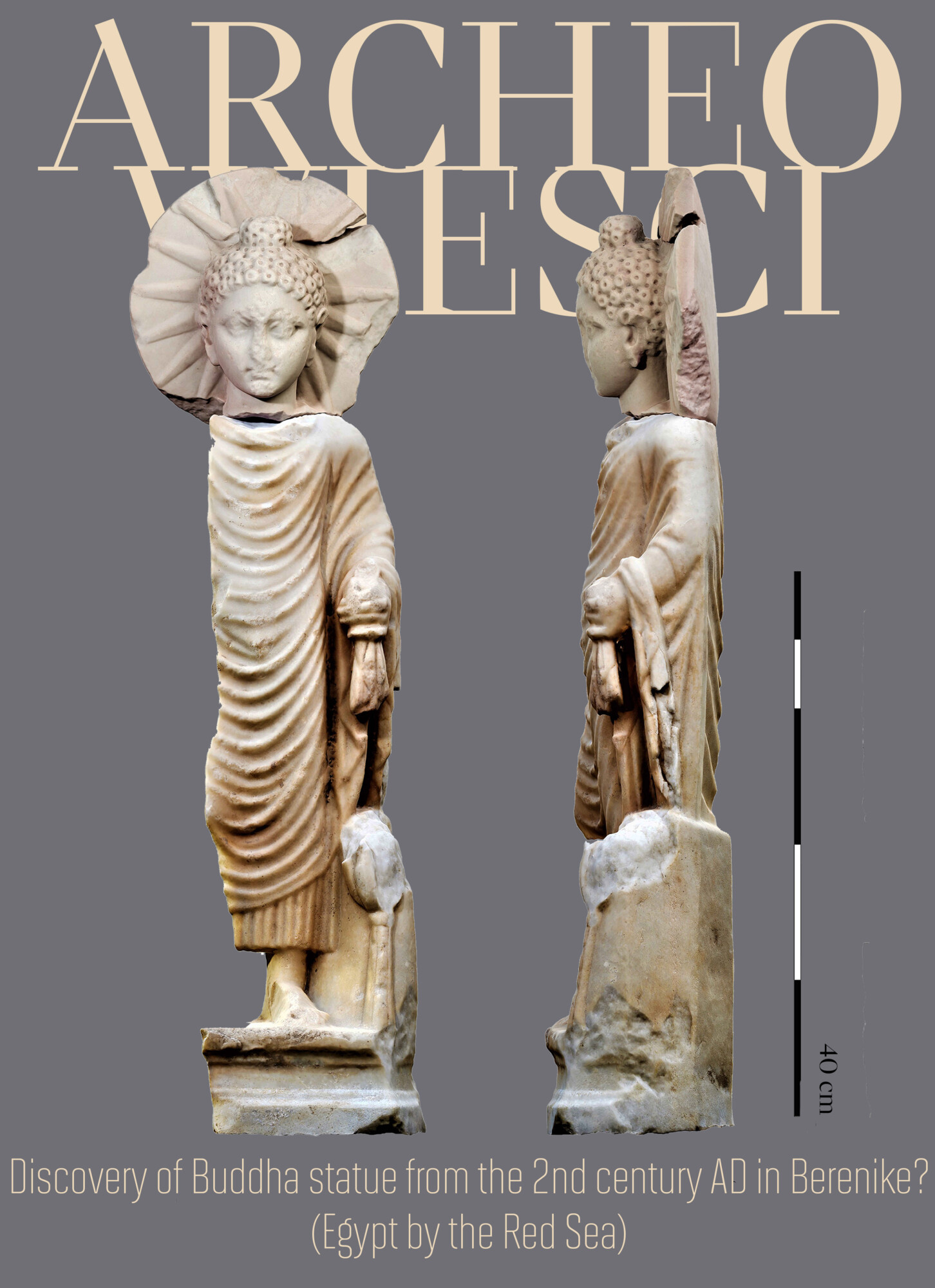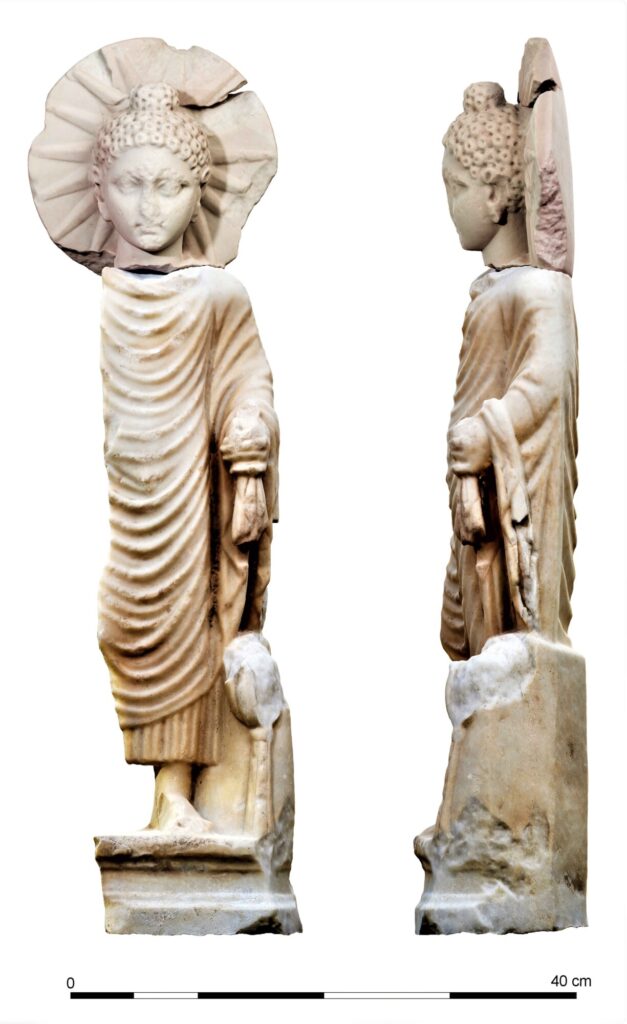
The joint Polish-American archaeological mission working in the city of Berenike on the Red Sea (Egypt) has succeeded in uncovering a statue of the worshiped Buddha from the Roman era, during excavations in the city’s archaeological temple.

Source: Ministry of Tourism and Antiquities of Egypt
Dr. Mostafa Waziri, Secretary General of the Supreme Council of Antiquities, stated that the archaeological mission has been working at the site since 1994 under the supervision of the Supreme Council of Antiquities. He emphasize that the current excavation season at the site witnessed many important evidence of commercial links between Egypt and India during the Roman era. Egypt was located centrally on the trade route connecting the Roman Empire to many areas of the ancient world, including India. There were many ports along the Red Sea coast in Egypt participating in this trade, the most important of which was Berenike. It is where ships arrived from India, loaded with products such as pepper, semi-precious stones, textiles, and ivory. The goods were unloaded and transported by camels across the desert to the Nile. Other ships then transported the goods to Alexandria and from there to the rest of the Roman Empire.

© M. Gwiazda
Dr. Mariusz Gwiazda, head of the mission from the Polish side, explained that the discovered statue was made of stone that was possibly quarried from the area south of Istanbul, or perhaps was locally carved in Berenice. It was dedicated to the temple by one or more wealthy Indian traders. The statue is 71 cm tall and depicts Buddha standing, holding part of his clothing in his left hand. There is also a halo around his head with sun rays depicted on it, indicating his enlightened mind, and there is a lotus flower next to him. The height of the statue is 71 cm. It depicts the Buddha standing, holding part of his clothes in his left hand. There is also a halo around his head with sun rays depicted on it, indicating his radiant mind. There is also a lotus flower next to him.

© M. Gwiazda
Dr. Steven Sidebotham, head of the mission from the American side, also pointed out that the mission during its work in the temple, uncovered an inscription in the Hindi language (Sanskrit) dating back to the Roman Emperor Philip the Arab (Marcus Julius Philippus, 244-249 AD). It seems that this inscription is not of the same date as the statue, which is probably much older, as other inscriptions in the same temple were in Greek, dating back to the early first century AD. Also there were found two coins, from the second century AD from the middle Indian Kingdom of Satavahana.

© M. Gwiazda
Source: Press release Ministry of Tourism and Antiquities, Egypt, from 26.04.2023
Translation: Archeowiesci.pl

One Reply to “Discovery of Buddha statue from the 2nd century AD in Berenike on the Red Sea”